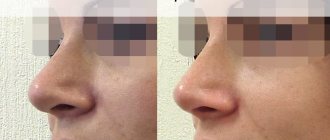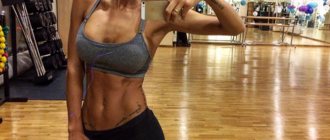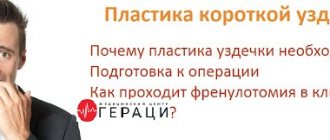Types of seams
All seams can be divided into two types:
- internal - sutures that are located under the surface of the skin and connect the edges of muscles and organs;
- external - sutures that are applied to the outer part of the body and connect the skin.
Any fastening of tissues has its own deadline.
Stitches on the head and neck are removed after 5-7 days, stitches on the extremities - after 8-10 days, sutures after operations on internal organs - after 10-14 days.
It should be borne in mind that much depends on the nature of the wound, as well as on the regenerative abilities of the patient.
Complete healing is indicated by the appearance of granules and the alignment of the seams with the color of the skin.
What types of sutures are distinguished in dental implantology?
Sutures after bone grafting and sinus lifting are usually used of 3 types:
- Monotypic or single;
- Supporters;
- Continuous.
Single sutures are not recommended if the lingual and vestibular flaps are located at different levels. The thread ends are tied so that the knot is located close to the buccal surface of the alveolar process. As a result, this makes it easier to remove sutures in the future and is a preventive method for possible tongue injuries. Especially for those threads that have hard and traumatic ends.
A supporting suture is used in cases where there is a limitation for surgical intervention, and cutting occurs exclusively on the vestibular or lingual flap.
A continuous suture is used in the area of several teeth, when all the flaps must move in the apical direction. As a result, the cheek flap is fixed along its entire length. From the inner edge, the entire procedure is repeated, but with a lingual flap. The knot is tied in the same place where the seam was originally.
Suture removal technology
The decision about when this procedure should be performed must be made by the attending physician.
Suture removal occurs in several stages:
- the sterile bandage is removed, the surface of the skin is treated with an antiseptic;
- the tip of the thread is pulled back with tweezers and cut with scissors in the white area;
- the extracted material is removed to a tray for further processing;
- For healing, the damaged area is treated with iodonate solution, and a sterile bandage is applied.
How to understand that complications have arisen after suturing?
Alarming symptoms after removing the “eight” are as follows:
- heavy bleeding that lasts more than a day;
- severe pain, throbbing pain that prevents you from sleeping or leading a normal life;
- very large swelling;
- redness in the intervention area;
- blood in saliva in the first three days after the intervention;
- elevated body temperature.
In all these cases, you must consult your doctor. It is possible that stitches will have to be stitched again to avoid complications.
When are sutures placed after tooth extraction?
It is usually necessary to suturing a wound after tooth extraction in the following cases:
- The most common sutures are applied after the removal of a wisdom tooth - “eights” are usually considered the most difficult in terms of surgical interventions and often require a special approach.
- To prevent bleeding - if the dentist does not have the time and opportunity to find out reliably whether the patient has a tendency to bleed (the operation must be performed urgently, because there is no time to do blood tests).
- During the extirpation of impacted and dystopic teeth, as well as severely destroyed ones (when the crown, in fact, no longer remains above the gum surface) or with significantly curved roots. In all these cases, an incision is made into the gums and underlying tissues, and therefore, after completion of the operation, suturing of the wound edges will be required.
The dental surgeon tightens the edges of the wound (puts the gum flap in place in the area of the incision) and sutures them with catgut or polyamide thread. In the first case, the suture material dissolves on its own; in the second, the threads will need to be removed by the dentist.
If you have a problem similar to that described in this article, be sure to contact our specialists. Don't diagnose yourself!
Why you should call us now:
- We will answer all your questions in 3 minutes
- Free consultation
- The average work experience of doctors is 12 years
- Convenient location of clinics
Single contact phone number: +7
Make an appointment
Care of the surgical wound
Surgeon of surgical department No. 1 Doctor Kacherovsky E.A.
A postoperative wound remains after surgical interventions and belongs to the category of incised wounds. It is closed using surgical threads using the suturing method, which allows for faster wound healing. The edges of the wound are tightly closed and considered closed. The wound that has been stitched is usually covered with a wound dressing or plaster.
With proper care, recovery after surgery takes about 2-3 weeks. It is very important, in the postoperative period, to thoroughly rinse the wound with a sterile solution, promptly change postoperative dressings, and conduct visual inspection for signs of infection. Proper wound care contributes to its smooth healing.
Wound care
- Keep the wound clean and dry to promote wound healing and avoid wound infection.
- Next, change the dressing/plaster depending on the condition of the wound, instructions for use of the wound care product, and the doctor's recommendation, or keep the wound covered with a dressing/plaster until the stitches are removed.
- Avoid changing the dressing too often, but change the dressing/plaster immediately if it becomes wet with blood or wound secretions, becomes soiled, or falls off the wound.
- Carrying out the dressing procedure:
- prepare the necessary wound care products;
- Wash your hands before and after dressing with warm water and soap for at least 20 seconds or use an alcohol-based hand rub;
- carefully remove the bandage/plaster from the wound;
- clean the wound according to the doctor's recommendations, for example, with a 0.9% NaCI solution or a wound antiseptic;
- Apply a new bandage/plaster to the wound.
Bathing
- You can shower 2-3 days after surgery or as recommended by your doctor:
- Before swimming, remove the bandage/plaster, with the exception of waterproof products;
- rinse the wound with lukewarm running water, do not rub the area;
- air dry the wound and the skin around the wound or gently blot with clean dressing material, being careful not to rub the wound;
- After bathing, apply a new bandage/plaster to the wound.
- You can then shower as needed or as recommended by your doctor.
- If there is drainage in the wound, showering is not allowed until the drainage is removed and the drainage hole is closed.
Monitoring the wound
- If there is wound pain, take the pain reliever prescribed by your doctor.
- Swelling in the wound area and wound pain can be reduced by:
- if you keep the limb elevated in case of a wound on the leg/arm;
- by holding a cold bag wrapped in a cloth over the wound for about 20 minutes at a time for two hours. This can be done with your doctor's permission.
- Both in the case of a wound with stitches and after the stitches are removed, there is a possibility that the wound will open. Thus, be careful, especially with a wound located on a moving part of the body: keep the wound area free of tension, avoid heavy lifting, and limit physical activity for 2 weeks after surgery. Follow your doctor's recommendations.
- The wound may be tender or numb, slightly raised or red, and the area around the wound may be itchy - these are normal wound symptoms.
- Contact your doctor in the following cases: persistent redness in the wound area, local fever, swelling and pain;
- bleeding has occurred, wound or purulent discharge has increased, or an unpleasant odor has appeared from the wound;
- body temperature rose above 37.5°C;
- general weakness and poor health;
- the wound opened.
Wound care and bathing after suture removal
- The time for suture removal is determined by the attending physician.
- Absorbable (absorbable) sutures dissolve on their own after a week to several months, depending on the suture material.
- Non-dissolving threads are usually removed 7-14 days (depending on the area of the body) after surgery, and later if necessary.
After removing the sutures, if necessary, apply a bandage/plaster to the wound, which can be removed after one day and then, as a rule, there is no need to cover the wound with a bandage or plaster.
- On the day of suture removal, do not wet the wound to ensure that any holes are closed. Then you can take a bath, visit the sauna and swim.
- The healing wound remains sensitive for several more weeks - protect the wound area from external damage and avoid rubbing it with tight clothing. If desired, you can keep the wound covered with a bandage or plaster during this period.
We sewed up the gum after tooth extraction: recommendations
If a patient's gums are sewn up after tooth extraction, he should be extremely careful and make sure not to damage the seam or pull out the threads prematurely. There are general recommendations that the patient should follow:
- The seams should not be touched with hands or with any tools, improvised objects, etc.
- For the first hours after surgery, you should not eat, smoke, or rinse your mouth.
- Oral hygiene must be observed in full to prevent infection of the wound and the development of inflammation. However, cleaning and rinsing must be done with extreme caution.
- In the first days after surgery, you should not eat foods with contrasting temperatures or too hard foods.
- You can rinse your mouth only as prescribed by a doctor and only with the means that he recommends. It is better not to use ready-made rinses from a pharmacy or store, as they can irritate the wound.
- In the case where the sutures were applied with non-absorbable suture material, you must contact your dentist 7-8 days after the operation to remove them. Trying to remove the threads yourself is a no-no!
If all recommendations are followed, healing will proceed safely, but if the patient does not follow medical advice, the wound may become infected with suppuration of the sutures and the development of an inflammatory process - and this will require additional treatment.
Classification of seams
After tearing out the “eight”, at the discretion of the dental surgeon, regular and self-absorbing sutures can be applied.
In the first case, we are talking about materials that cannot dissolve on their own. These are silk, nylon, polyester. Such threads are not absorbed. They securely hold the edges of the wound until the doctor removes them. Self-absorbable material is absorbable. Its main advantage is that the patient does not have to visit the doctor again to have his stitches removed. The latter disappear without a trace on their own.
There are two types of self-absorbable threads:
- Absorbable due to hydrolysis reaction. These include Dexon and Vicryl threads. They are synthetic and do not cause allergic reactions. The edges of the wound are securely held for about one month.
- Absorbable due to the influence of enzymes. We are talking about Catgut. Its particles are quickly eliminated from the human body. Catgut is used for complex dental operations. But it is important to consider that it contains foreign proteins that can cause inflammation.
There is no need to think that suture materials dissolve without a trace. They simply break down into tiny particles that a person spits out or swallows. These particles are non-toxic and therefore cannot cause poisoning.
Why do you need to remove stitches in a timely manner?
Suture material, which is made of synthetic fibers, is a foreign body. If it is not removed in time, inflammation may begin. We strongly do not recommend removing stitches yourself at home, as there is a risk of tissue rupture and infection. This can lead to blood poisoning and death .
The main condition for removing sutures is the successful dynamics of the healing process, which only a doctor can determine. The duration of the procedure varies and depends on the following factors :
- type of surgery;
- presence or absence of local complications;
- the peculiarity of the disease for which the intervention was carried out;
- regenerative features of the body.
Professional removal of stitches after surgery in Rostov-on-Don takes into account that during oncological operations the body recovers worse and the wound needs more time to heal.











